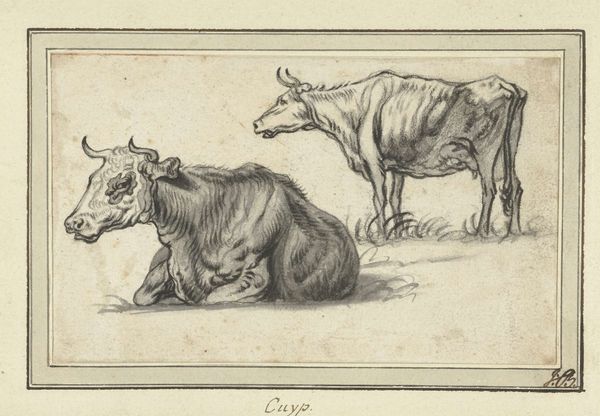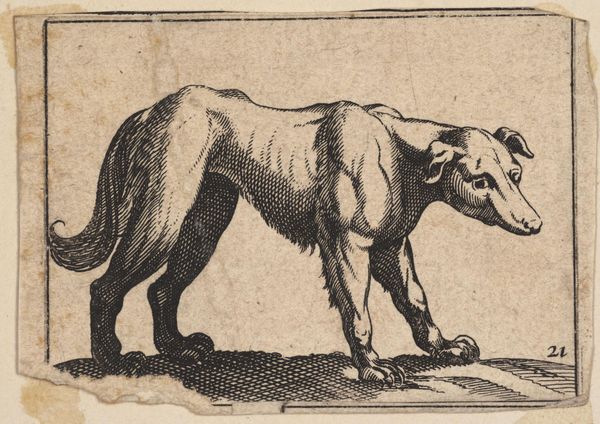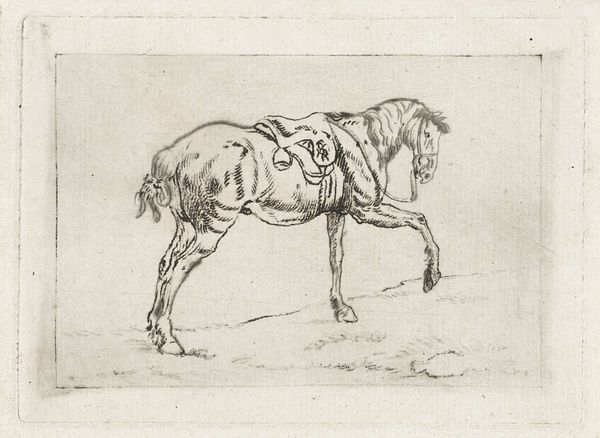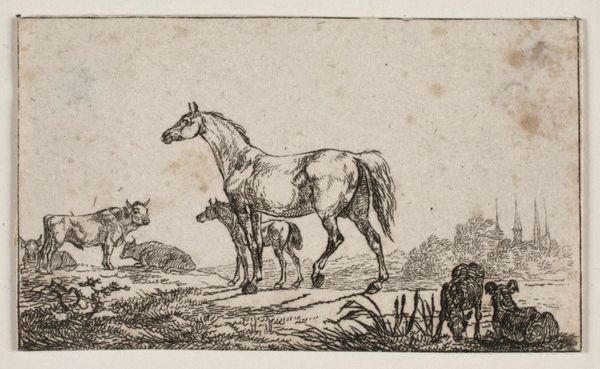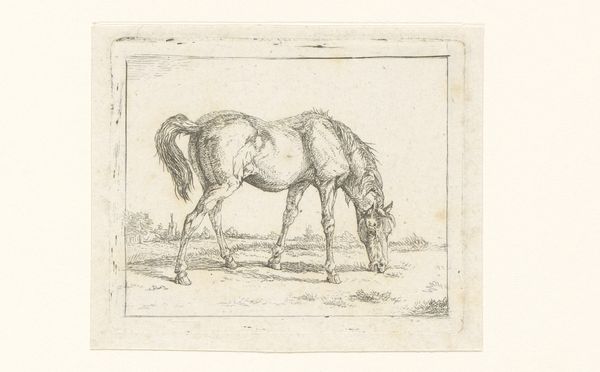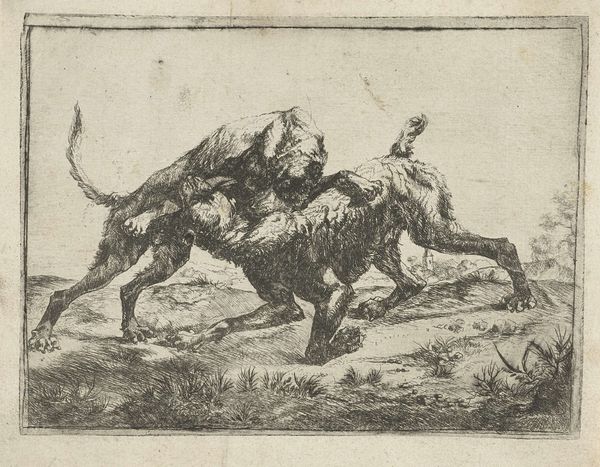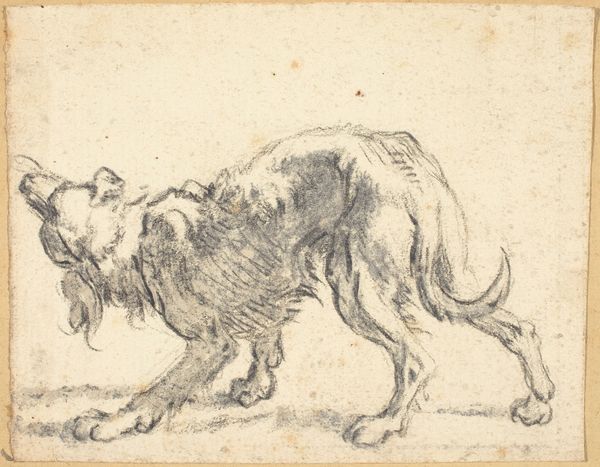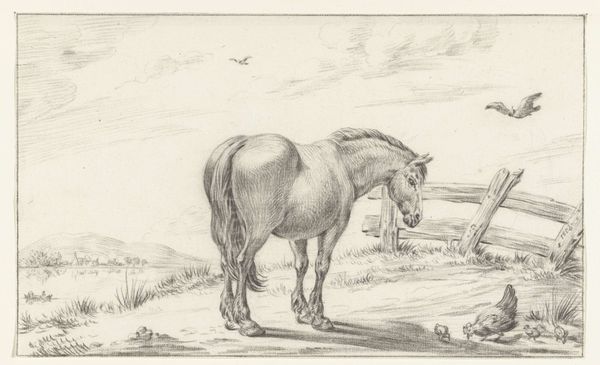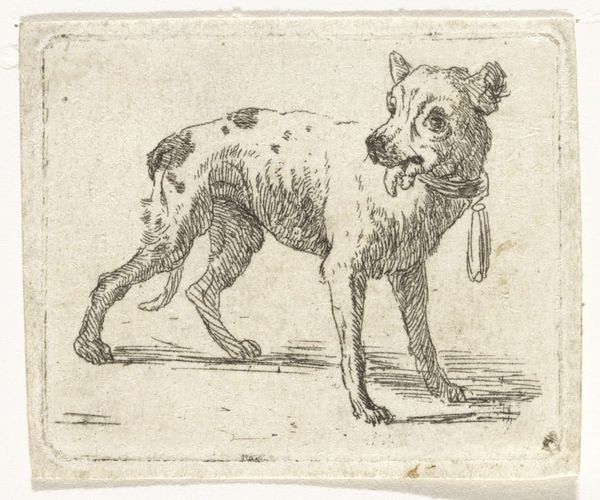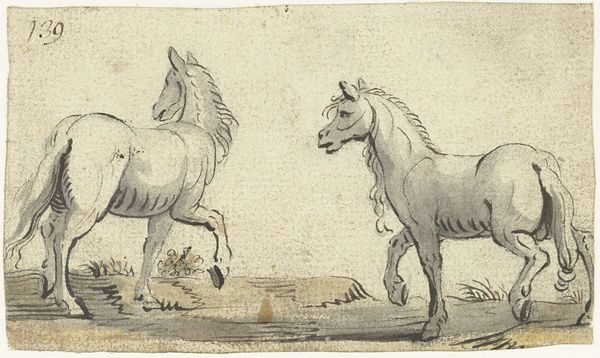
drawing, paper, ink
#
drawing
#
baroque
#
animal
#
landscape
#
paper
#
ink
#
pen-ink sketch
#
horse
Dimensions: height 32 mm, width 48 mm
Copyright: Rijks Museum: Open Domain
This etching of a horse, made by Pieter Cornelisz. Verbeeck, depicts an animal restrained, yet imbued with a sense of contained energy. The tethered horse symbolizes themes of constraint and potential freedom. The motif of a horse, particularly when tethered, carries a rich symbolic load throughout art history. Consider the classical sculptures where horses represent power, nobility, and control, yet here, the restraint introduces an element of tension. We might recall similar themes in Renaissance equestrian portraits, where the horse's controlled posture reflects the ruler's authority, a composed restraint. The act of tethering itself speaks to a fundamental psychological tension: the desire for freedom versus the necessity of control. This tension, deeply embedded in our collective memory, resonates with our own internal struggles between impulse and restraint. Notice how Verbeeck captures the latent energy of the horse through its posture, poised as if ready to bolt, mirroring our own subconscious impulses straining against the constraints of societal norms. This symbol is not static but cyclically returns, echoing through time and continuing to challenge our understanding of freedom and control.
Comments
No comments
Be the first to comment and join the conversation on the ultimate creative platform.
